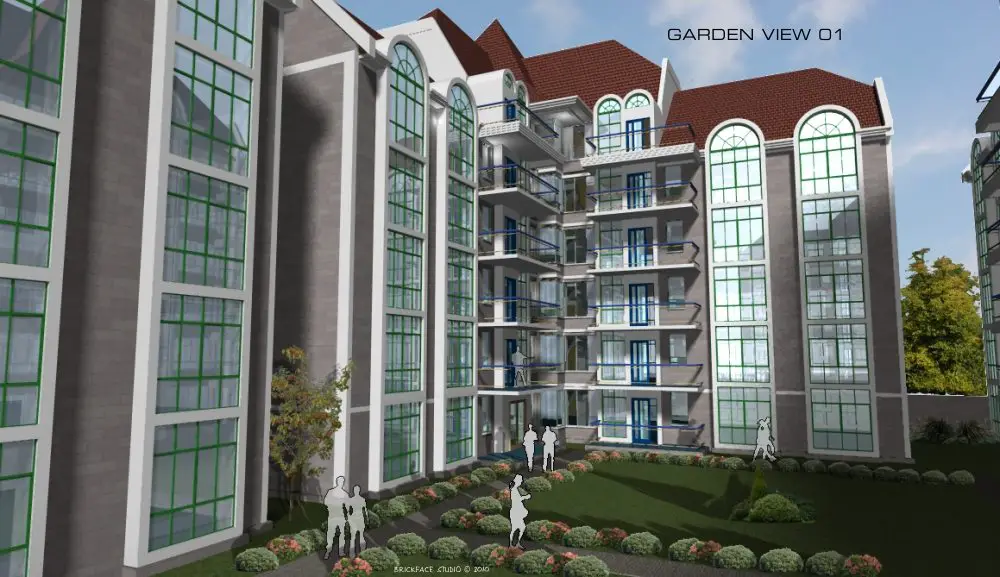Brickface Studio Architects is a Kenyan design studio founded by Architect Amos Orie in 2005. Arch. Orie, who was registered by the Board of Registration of Architects and Quantity Surveyors (BORAQS) earlier in 2001 and is the sole proprietor, has always had an interest in clay brick production and construction. He traces his interest in the building industry to his grandfather. “My grandfather burnt bricks in order to educate my father”, he reveals, insinuating that it was only natural that he studied a related trade.
Orie is a graduate of the University of Nairobi where he obtained his Bachelor of Architecture degree. He prides himself in providing services with honesty and dignity. His forte is designing technically superior, sustainable buildings with low lifecycle cost.
Besides Arch. Orie himself, Brickface Studio Architects comprises one Assistant Architect, a Draftsman and a Clerk of Works. Extra professional human resources are hired whenever needed. The firm not only scouts for technical expertise in Kenya but also sources specialist services such as animations, digital artists’ impressions and international standard models from as far afield as China and India.
Brickface Studio Architects provides the following services: Architectural and Interior Design; Town Planning; Feasibility Studies and Project Planning; Construction Supervision and Joint Venture Agreements. The firm is currently specializing in residential developments as well as factories and warehouses.
Among the projects the consultancy has been involved in are:
– DulDul Industrial Park Mombasa Road
– Royal ICT Building Mombasa Road
– Joinven 360 Syokimau
– Milimani Housing Nakuru
– SkyRock Apartments Lavington
According to Arch. Orie, Brickface Studio Architects is for the time being a local operator but would branch out in the region and even elsewhere should opportunities present themselves. He says he would also like to go into Arbitration at some point and discloses that although he is not a developer at the moment, he has designed some low cost modular houses that he plans to put into production a few years down the line.
Industry Perspectives
Arch. Orie has mixed views on the construction industry in Kenya and particularly within the County of Nairobi. On legislation, he observes that new bylaws drafted around the turn of the millennium have still not been implemented. “We are still using 1967 statutes”, he says and expresses his disappointment with Local Authorities’ tendency to change bylaws haphazardly. He laments the lack of a clear revision of Nairobi Masterplan in the wake of rapid development in the city, citing Dubai’s which “was done in the 1980s but is quite effective”.
“Public Private Partnerships have been used the world over for development of crucial infrastructure and City Hall’s continuing adherence to old financing models has put the pace of its infrastructure program many steps behind that of the real estate sector”, he adds.
On the business climate in the country, Arch. Orie is concerned by the “influx of foreign developers with questionable construction skills and little or no knowledge of our cultures and aspirations.”
On the upside, he feels the industry is on a roll. “There is increased pace and broadened scope of projects due to renewed support from banking sector”, he observes. He also says the architectural and other consultancy services are showing vibrancy as professionals group into consortiums to increase their capacity as building procurement models evolve with “Joint Ventures” and “Design and Build” projects become widespread. He says this is enabling bigger projects to be undertaken while at the same time improving turn-around time. Designs are also developed faster due to the uptake of computer modelling in the industry. New technologies and equipment are also boosting the industry.
Arch. Orie is cautiously optimistic about the effectiveness of new regulatory bodies such as the National Construction Authority (NCA), observing that the real impact of this organization has not been understood “as it operates as an absolute authority showing no consultative interaction with the industry participants.” He suggests that revenue collection be outsourced to Kenya Revenue Authority. “NCA would gain more mileage and relevance to tackle CPD, free public consultations (open days), research and statistics in close collaboration with other stakeholders such as AAK and IEK”.
Regarding professionalism and with particular focus on occasional collapse of buildings, the architect blames poor supervision by appointed consultants or failure by the developer to hire qualified consultants.
Arch. Orie laments that despite the existence of a comprehensive document by AAK governing competition, there is the rogue tendency by some developers to “brain pick” several professionals at a time and “getting away with almost free services as these professionals rush to undercut one another” despite the increased project scope.
On training of professionals in the country, Arch Orie, while noting that this is on the rise due to government investment in training institutions, is wary of the proliferation of “dubious” commercial colleges churning out half-baked graduates of technical courses.


I bought a house at M/s Shree Hari Homes Estate, Athiriver last year (2017). Today i saw that the architect was Brickface architects. Am from Marsabit Town. Want to go for motels on a piece of land that i have in Marsabit. To march the surroundings i thought to use bricks. Incidentally your firm also advises on the use of bricks in buildings. I thought of meeting you on this project details. How can I meet you?